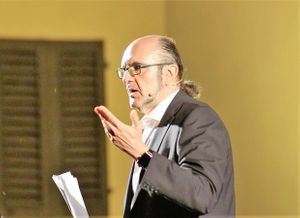There were essentially two reasons that prompted me to listen to and write about this recording—featuring lute pieces by the Venetian (despite his German-sounding name) Giovanni Girolamo Kapsberger and the Frenchman Robert Ballard—recently released by Aulicus Classics. The first reason lies in the stature and authority of the performer, Massimo Marchese from Savona; the second stems from the intuitive and thought‑provoking comparison drawn in the album’s liner notes by composer, theorist, and lutenist Ugo Nastrucci. He likens these two titans of late‑Renaissance music, rendered in painterly terms, to Caravaggio on the one hand and Poussin on the other.
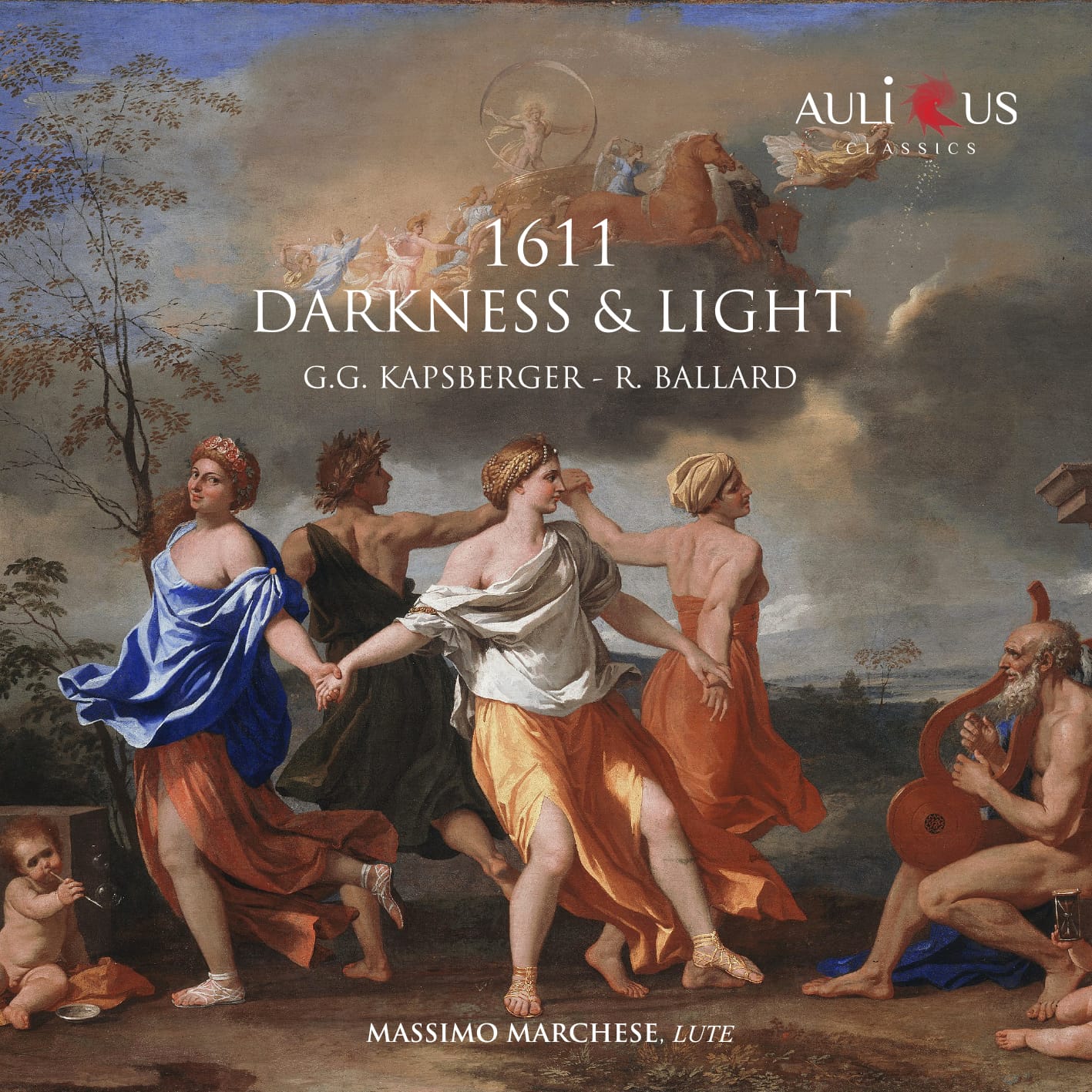
This parallel, in my view, is fully justified—not only by the distinctive compositional qualities of the two musicians, but also by considering that we are situated in an era spanning the late sixteenth century into the early decades of the seventeenth, when the interdisciplinary unity of the arts had not yet been irreversibly torn apart by the tectonic shift of rationalist thought. That movement was bent on dichotomizing the humanistic from the scientific, and, moreover, on severing the purely “artistic” domain, gradually putting an end to the allegorical conception that had once united and interwoven disciplines—music, painting, architecture, and poetry—under a shared symbolic language (Fulcanelli taught us as much), linking them in more or less subterranean ways.
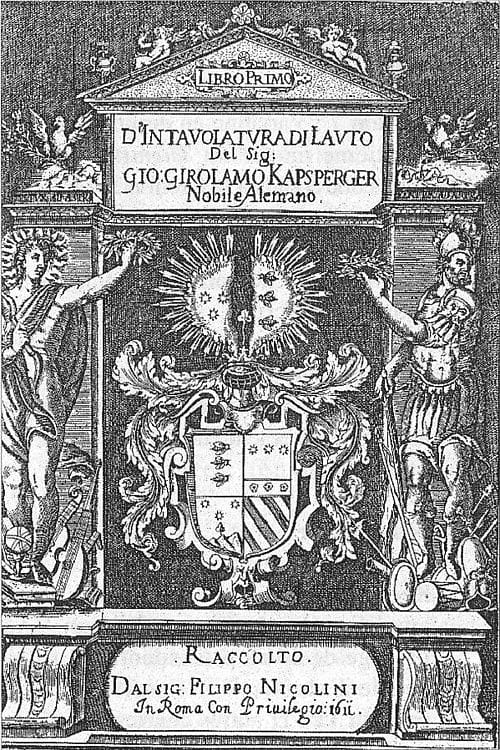
As if that weren’t enough, this very recording also highlights a single year—1611—which is no coincidence, given that the CD is aptly titled 1611 Darkness & Light. All devotees of lute music regard 1611 as supremely important, since it was in that year that Giovanni Girolamo Kapsberger’s Primo libro d’intavolatura di lauto and Robert Ballard’s Premier livre de luth first appeared in print. Their significance is readily summed up: with these publications, both Kapsberger and Ballard effected a radical shift in the compositional approach to lute music, supplanting the earlier Renaissance model—based on the Pavane–Saltarello–Piva or Pavane–Saltarello sequence—with the emerging concept of the Suite.
Turning to the playlist that Massimo Marchese compiled for this recording: of the twenty‑four pieces included, nine derive from Kapsberger’s collection and the remaining fifteen from Ballard’s. Marchese has thoughtfully alternated them, providing even a less attentive or less experienced listener with ample opportunity to discern the fundamental stylistic differences between these two masters.
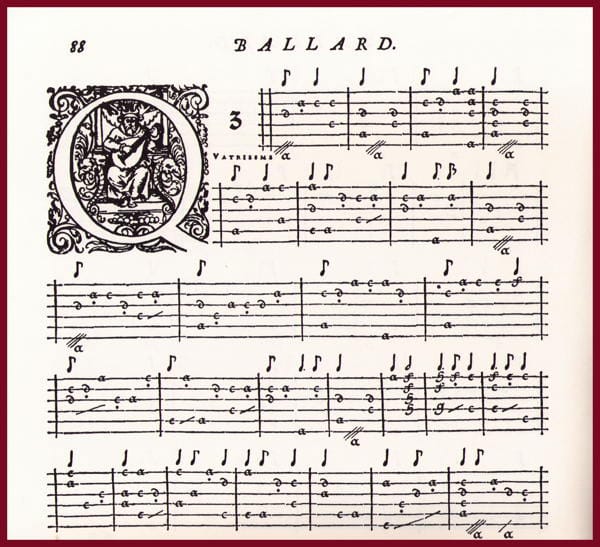
Returning once more to Ugo Nastrucci’s observations: in both tablatures one encounters an improvisatory form—exemplified by the Toccata in Kapsberger and the Entrée de Luth in Ballard—which is paired with two dance movements (the Gagliarda and Corrente in Kapsberger; the Ballet, Courante, and Première Volte in Ballard). Yet this improvisatory impulse is realized quite differently by the Venetian and the French composer. Kapsberger, especially in his three Toccatas on the album, reveals a kind of double‑faced nature: on one hand, those rapid virtuosic passages feel spontaneous and free; on the other, they open into expansive sections rich with refined counterpoint (a contrapuntal flair that even surfaces occasionally within his dances). Ballard, by contrast, adopts a more linear‑harmonic approach—a shining example of the elegant, courtly “French” tradition marked by the interplay between melody and bass lines.
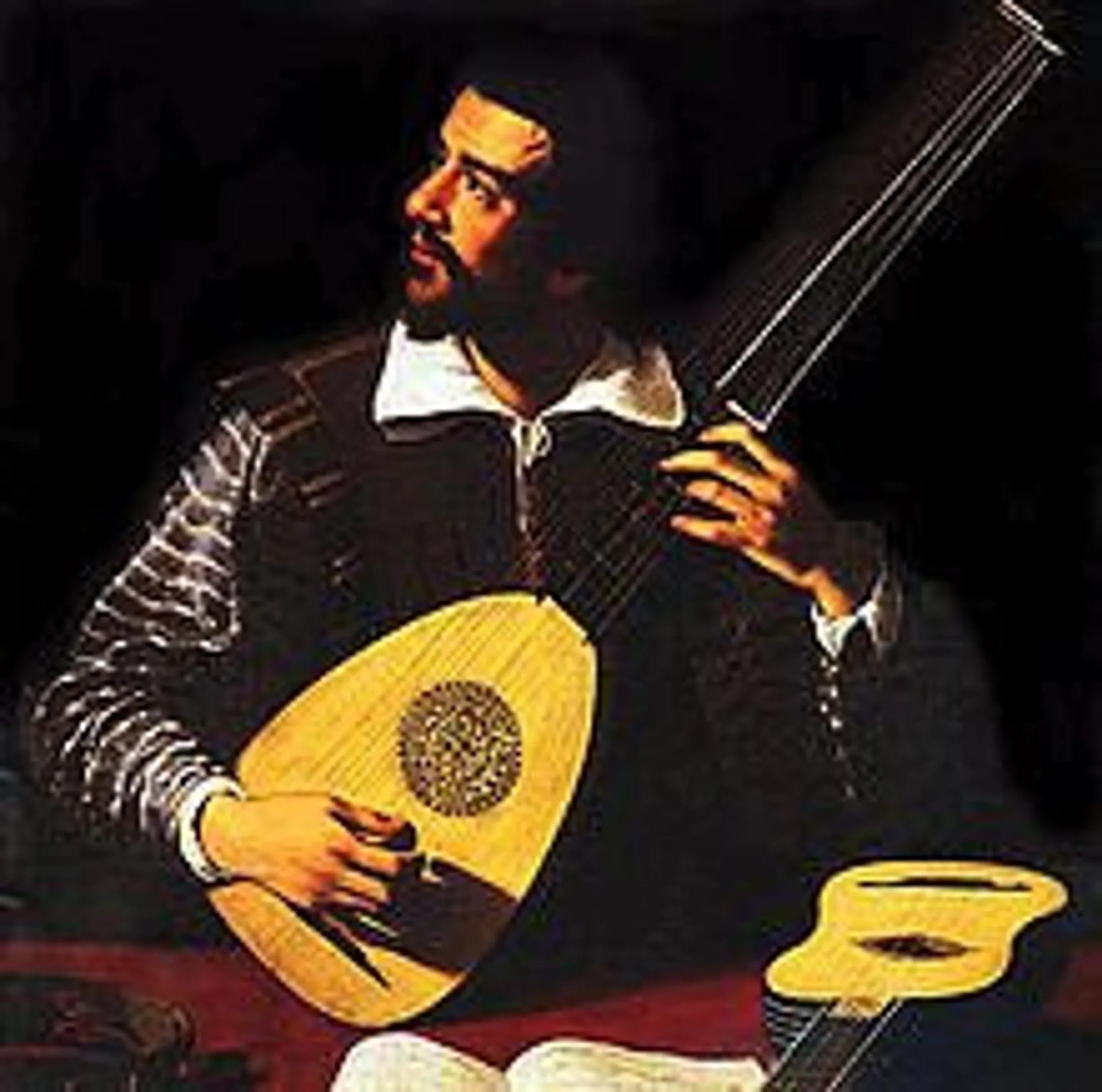
This, in turn, makes the album’s title and the comparison to Caravaggio and Poussin all the more fitting (indeed, the CD cover reproduces Poussin’s famous “The Dance of Human Life”). If Kapsberger’s music brims with creative tension—metaphorically akin to Caravaggio’s dramatic chiaroscuro—then Ballard’s measured, linear sound‑structure embodies the serene, harmonious classicism of Poussin, where form and colour unite in tranquil balance.
Indeed, Kapsberger and Ballard epitomize the two faces of that Janus‑headed transition from the late Renaissance to the early Baroque. Giovanni Girolamo Kapsberger—born in 1580, five years younger than his French counterpart—tends to embody one of the cultural and artistic cornerstones of the seventeenth century, namely the so‑called Wunder, which goes beyond mere “wonder” or “astonishment” to imply “magic” and “marvel.” His lute and theorbo compositions are designed to awaken a genuine sense of the marvellous. Robert Ballard of Paris, by contrast, upholds a steadfast classical aesthetic, deliberately pursuing a thoroughly sixteenth‑century style. As Ugo Nastrucci notes, Ballard’s lute remained tuned to the vieil ton—the traditional Renaissance tuning—even as he added extra bass courses. In this way, he demonstrates the continuity that early Baroque artists and thinkers both preserved and propagated throughout their creative evolution.
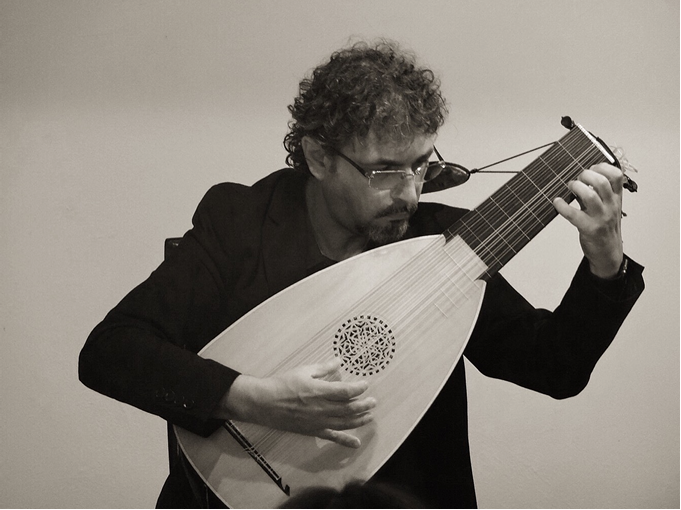
If one wishes to understand why Massimo Marchese is regarded as an international authority in the world of the lute, one need only listen to his interpretation on this recording. Using a ten‑course Michael Lowe instrument built in Oxford in 1977, the Savonese artist delivers a performance defined by a union of clarity and beauty: clarity in disentangling Kapsberger’s intricate sonic architectures—bringing to the fore the constant play of chiaroscuro that permeates his compositional language—and beauty in fully conveying the sense of classicism, the multifaceted stillness radiating through Ballard’s pieces, thus enabling even a less seasoned listener to perceive the fundamental distinctions between the two composers’ visions.
On a broader level—and this is true not only of this Aulicus Classics release—Marchese, through his interpretative inquiries, captures the very spirit of what he performs. This reflects an intellectual lucidity, prior to musical technique, that allows him to immerse himself not only in the written score but also in the cultural milieu from which it sprang. Consider, for example, Ballard’s Ballet Troisième: its dance‑like flow is the precise sonic projection of Poussin’s allegorical painting featured on the cover, where four figures, hand in hand, form a circular dance whose elegant, essential steps are literally sustained and propelled by the unfolding timbral texture of the music.
The beauty of abstract sentiment, the clarity of the performing gesture, the sensitivity to embody that temporal essence—this is what Massimo Marchese communicates in this magnificent disc, indispensable for anyone still capable of being moved by the enchantment of great early music.
“The recording’s sound capture, engineered by Massimo Marchese himself, is also of high calibre. The dynamic range proves effective through a sense of speed, naturalness, and energy, which benefits the spatial parameter as well: the instrument is placed centrally between the speakers in an intimate soundstage that nevertheless never feels inaccurate or artificial. In terms of tonal balance, the mid‑low register and the high register remain consistently distinct and never overlap, each with appropriate separation. Finally, the detail is richly material, conveying the physicality of the lute thanks to a substantial amount of ‘blackness’ surrounding it.”
Andrea Bedetti
Giovanni Girolamo Kapsberger – Robert Ballard · 1611 Darkness & Light
Massimo Marchese (lute)
CD Aulicus Classics ALC 0135
Artistic Rating 5/5
Technical Rating 4/5
